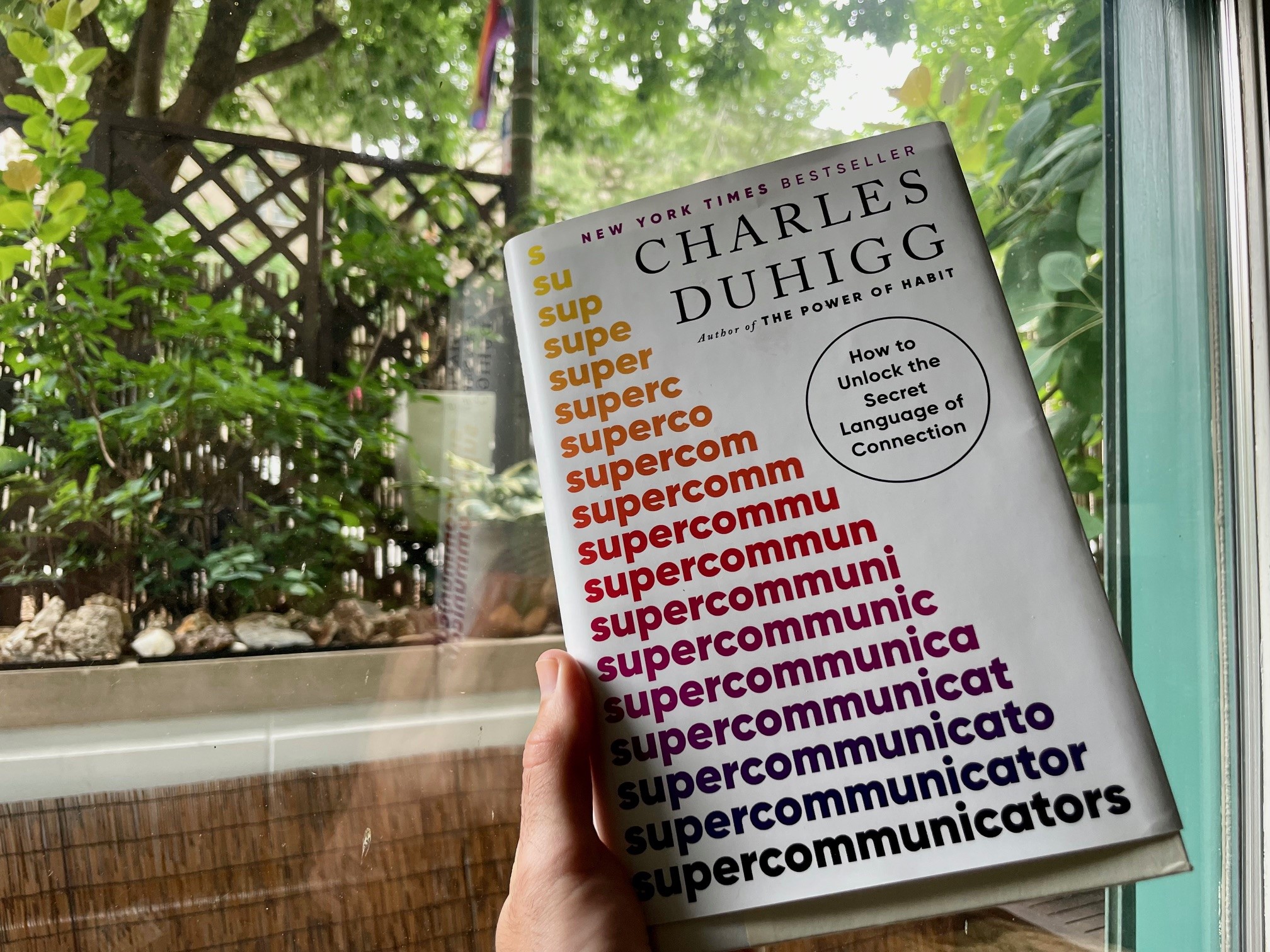
Part 2: The “How Do We Feel” Conversation.
A while back, we shared our first blog post on the book Supercommunicators by Charles Duhigg. It focused on Part 1: The What’s This Really About Conversation. Here are our thoughts on Part 2: The How Do We Feel Conversation.
Duhigg tells us that every conversation is, in some way, about how we feel.
Every conversation is shaped by emotions.
So, no matter what you’re trying to achieve, the “how we feel” component is essential.
Why should we be emotional Supercommunicators?
Duhigg explains that emotional intelligence is a “form of social intelligence that involves the ability to monitor one’s own and others’ feelings and emotions.” This type of intelligence allows us to:
- Recognize and name our own emotions.
- Regulate our emotions and influence the emotions of those around us.
- Employ perspective-taking.
- Build relationships with colleagues.
- Use our emotional skills to grow.
Lest we think this is all too “touchy feely” for work, Duhigg weaves together lessons, significant research studies, and impactful case studies from the past 40+ years to demonstrate the importance and impact of these skills. A few examples:
- Ahead of the international space station launch, NASA worked to redefine the criteria for “what makes a good astronaut” to include emotional intelligence.
- A University of Chicago psychology professor taught listening and vulnerability skills at a conference of Wall Street and hedge fund professionals.
- A group of civic organizations brought opposing sides of the gun control debate to explore how to connect during conflict.
These examples get professionals past small talk, technical expertise, and who shouts the loudest or shames the greatest, and teaches them to meet in the right place to connect with others and do their best work.
Are you an emotional Supercommunicator?
- Do you ask deep questions? Remember to ask questions that:
- Draw out someone’s values, beliefs, judgments, or experiences, not just facts.
- Invite people to talk about how they feel, describe specific emotions, or empathize.
- Do you listen? Confirm your understanding by restating what you’ve heard. And remember, showing that you understand doesn’t mean you agree.
- Are you fostering reciprocity? As others share their vulnerabilities, share something about yourself as well. Acknowledge the other person’s emotions and show them you care. Respond to the other’s needs.
- Do you make room for laughter? Lighten up! Laughter shows we have heard the other person and that we want to connect with them. Duhigg says, “Laughter, and other nonlinguistic expressions such as gasps and sighs, or smiles and frowns, are embodiments of the matching principle…”
- How good are you at interpreting nonverbals? Duhigg says Supercommunicators are good at detecting how others feel based on the energy in their gestures, the volume of their voices, the speed and cadence of their speech, and the affect they carry.
- Are you making conversations psychologically safe? Show genuine interest and listen actively. The safer someone feels, the more they are willing to trust, share, and reveal vulnerabilities.
How do Supercommunicators handle tough conversations?
Becoming a Supercommunicator doesn’t guarantee conflict-free, comfortable communication. It doesn’t promise a newfound ease with disagreements. Rather, we approach conflict differently:
- Shift the goal to understanding why the conflict exists, rather than focusing on winning or wounding.
- Recognize that the conflict has multiple parts: the surface issue at the center of the disagreement, and the emotional conflict underneath.
- Reframe the idea of control. Rather than controlling the other person, focus on controlling yourself: your impact on the setting and your focus in the conversation.
- Make room for emotion. Emotions are there, whether or not you choose to acknowledge and use them. If you don’t, they “leak out” and have unintended effects on your conversations and relationships.
Supercommunicating is aptly named. It really is a superpower you can deploy in any social or professional situation. It’s about knowing what kind of conversation is happening, how the participants are feeling, and how to draw out what really matters to all involved.




